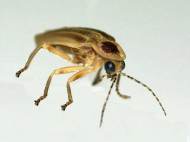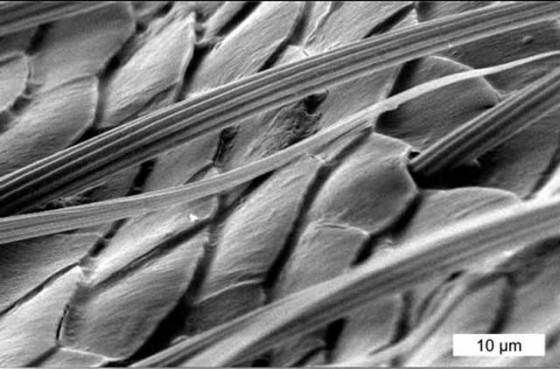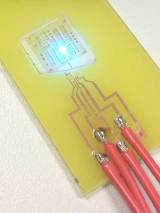Researchers mimic fireflies to make brighter LEDs
 Researchers from Belgium, France, and Canada studied the internal structure of firefly lanterns, the organs on the bioluminescent insect’s abdomens that flash to attract mates, and they managed to employ their findings in order to modify a light-emitting diode (LED) to be up to 55 percent more efficient. The technology oould be employed in near future, since it is easily applicable onto existing LED manufacturing processes.
Researchers from Belgium, France, and Canada studied the internal structure of firefly lanterns, the organs on the bioluminescent insect’s abdomens that flash to attract mates, and they managed to employ their findings in order to modify a light-emitting diode (LED) to be up to 55 percent more efficient. The technology oould be employed in near future, since it is easily applicable onto existing LED manufacturing processes.
The scientists identified an unexpected pattern of jagged scales that enhanced the lantern’s glow, and applied that knowledge to LED design to create an LED overlayer that mimicked the natural structure. The overlayer, which increased LED light extraction, could be easily tailored to existing diode designs to help humans light up the night while using less energy.
Fireflies create light through a chemical reaction that takes place in specialized cells called photocytes. The light is emitted through a part of the insect’s exoskeleton called the cuticle. Light travels through the cuticle more slowly than it travels through air, and the mismatch means a proportion of the light is reflected back into the lantern, dimming the glow. The unique surface geometry of some fireflies’ cuticles, however, can help minimize internal reflections, meaning more light escapes to reach the eyes of potential firefly suitors.
When Jean Pol Vigneron, Professor at the University of Namur, visited Central America to conduct field work on the Panamanian tortoise beetle (Charidotella egregia), he also noticed clouds of twinkling fireflies and brought some specimens back to the lab to examine in more detail. The firefly specimens that served as the inspiration for the effective new LED coating came from the genus Photuris, which is commonly found in Latin America and the United States.
Vigneron and colleagues used scanning electron microscopes to identify structures such as nanoscale ribs and larger, misfit scales, on the fireflies’ cuticles. The protrusions repeat approximately every 10 micrometers, with a height of approximately 3 micrometers. When the researchers used computer simulations to model how the structures affected light transmission they found that the sharp edges of the jagged, misfit scales let out the most light. The finding was confirmed experimentally when the researchers observed the edges glowing the brightest when the cuticle was illuminated from below.
“We refer to the edge structures as having a factory roof shape”, said Annick Bay, a Ph.D. student at the University of Namur. “The tips of the scales protrude and have a tilted slope, like a factory roof. In the beginning we thought smaller nanoscale structures would be most important, but surprisingly in the end we found the structure that was the most effective in improving light extraction was this big-scale structure.”
Since LEDs face the same internal reflection problems as firefly’s lantern, the researchers decided to mimic the phenomenon by creating a jagged overlayer on top of a standard gallium nitride LED. Nicolas André, a postdoctoral researcher at the University of Sherbrooke in Canada, deposited a layer of light-sensitive material on top of the LEDs and then exposed sections with a laser to create the triangular factory-roof profile. Since the LEDs were made from a material that slowed light even more than the firefly’s cuticle, the scientists adjusted the dimensions of the protrusions to a height and width of 5 micrometers to maximize the light extraction.
While other research groups focused on mimicry of nanoscale structures in order to increase the efficiency, this international team of researchers is the first to identify micrometer-scale photonic features, which are larger than the wavelength of visible light. The researchers claim that it should be possible to apply these novel design enhancements to current LED production within the next few years, with small modifications to current manufacturing techniques.
For more information about the investigation of Photuris firefly, you can read the paper published in the OSA open-access journal Optics Express: “Improved light extraction in the bioluminescent lantern of a Photuris firefly (Lampyridae)” [4.22MB PDF].
For more information about the creation of the LED overlayer, you can read the paper published in the Optics Express: “An optimal light-extracting overlayer, inspired by the lantern of a Photuris firefly, to improve the external efficiency of existing light-emitting diode” [2.52MB PDF].











This is excellent! Far better than other attempts to increase LED efficiency and lower their price and consumption once integrated into LED bulbs.